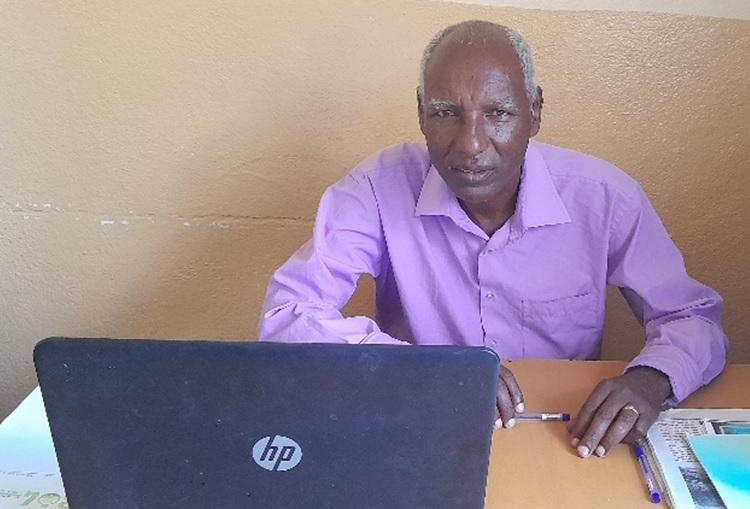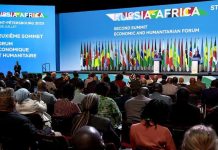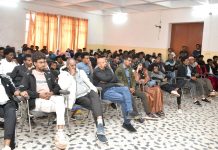Africa-Press – Eritrea. Gash-Barka Region is referred as MesobEdlat in Tigrinya, meaning “the Basket of Opportunities.” This term justifiably depicts the administrative region’s diverse resources and potential for multi-sectorial development. In relation to agriculture alone, this region is endowed with a massive area of land for both crop and forage production, coupled with a suitable environment for livestock development. The Ministry of Agriculture (MoA)’s Public Relations Division has conducted a brief interview with Dr. TeklezghiTekie, Head of Livestock Development Branch in the Regional Administration of Gash-Barka, concerning the status of dairy development in the region.
Q: Can you give us some statistical facts concerning Gash-Barka Region’slivestock potential?
A: Gash-Barka is a region with a great endowment of vast grazing area and pastoral practice. It covers 40% of the country’s total area and 80% of its inhabitants depend on agriculture. Around one million bovines, more than three million caprines, 110 thousand camels, and 150 thousand equines have been registered in our administrative region.
Q: What is the quality and outreach of veterinary services in the region?
A: Out of the entire professionals in our branch office, 60 are veterinary practitioners. They are working on a total of 25 clinics across the region. Gash-Barka is much more prone to infectious animal diseases, as there is high mobility of animals within the region. To tackle risks of disease outbreaks, our veterinary officers are engaged in continued surveillance and follow-up activities. Pursuant to this proactive measure, instances of major animal diseases are on the decline.
To ensure that our preventive approach is effective, we prioritize the most serious diseases such as PPR, Anthrax, Brucellosis, Rabies etc.Clinic-based services are rendered on regular basis. For example, such service was given to a total of 290 thousand animals last year, while more than 330 thousand were vaccinated. Disease outbreak surveillance activities are constantly undertaken.
Q: Please tell us about ongoing forage production activities.
A: The size of grazing land in Gash-Barka region totals more than 2 million hectares. In addition to the highest number of livestock, the region witnesses seasonal migration of herds from the neighboring administrative regions, namely, the Central, Anseba and Southern regions. Rarely, herds migrate from the Northern Red Sea Region to our region for foraging during instances of extreme drought.
The main sources of animal feed in our region are grazing areas. Recently, agriculture professional who are working at sub-zonal level were trained on community-based management of grazing areas. They have already shared the knowledge they have acquired with the concerned farmers. We are further working to ensure that every administrative area sets up an enclosure to conserve forage for dry times. It is important that strict supervision, cultivation of grasses and shrubs, as well as soil and water conservation activities is carried out in these enclosures. So, 150 quintals of natural grass seeds have been planted in such enclosures in Akurdet, Dighe, Forto-Sawa, Haikota, Tesenei, Barentu, Goluj, Gogne, Shambuko and other sub-zones in areas where proper soil and water conservation techniques had been implemented.
Moreover, we increased our forage production efforts on our station in Akurdet. Supply of sweet potato and elephant grass seedlings was made on pro bono basis in the sub-zones with irrigated forage farming potential. Farmers were given the necessary training prior to the distribution of these seedlings.
Equally worth mentioning is, our persistent engagement in awareness-raising activities concerning theneed of forage storage for the dry season. There are a number of available forage varieties that farmers can consider for storage in our region.
The MoA also distributes concentrated animal feed as a contingency means of surviving times of extreme drought or locust harm on grazing areas. For instance, a total of 2 thousand quintals of high-energy rangeland pellets were distributed for free to famers last year.
Q: What is the status of Gash-Barka region’s water resource availability vis-à-vis dairy development?
A: For a long time, pastoralists were dependent on water wells due to lack of water reservoirs. However, now5 dams, 11 micro-dams and 138 ponds have been constructed in our region, thanks to the government’s resolute initiative of watering points.Water resource from these reservoirs has made positive impact on livestock development in general, and in that of dairy in particular.
Q: What specific interventions has the administrative region made with regards to dairy development?
A: The majority of dairy farming practice in Gash-Barka region lies under the extensive farming system. Since the indigenous breeds have their merits, we encourage farmers to maintain and upgrade their blood by selecting bulls for more productive offspring. Besides, we are advising semi-intensive dairy farmers to focus on forage production so that it can serve them as a stepping stone to move to intensive farming system.
It is to be recalled that the MoA distributed a number of meritorious cattle and sheep in different sub-zones of our region with a view to promoting productive dairy farming programs. Part of this initiative involved distribution of Butana Sudanese cattle to a total of 240 farmers in 2009. Women-led families were among these beneficiaries. Currently, the cattle have gone through 11 generations, in the case of the farmers who managed them properly. Based on the pre-condition of the distribution process, any beneficiary has the mandate to pass on one heifer to another farmer. Hence, through this system, more than 720 famers have become beneficiaries of the scheme, and the total number of cattle stands at 2,640 at this point. The introduction of this breed has given rise to improvement of the performance and outcome. As a result, they made positive impact in improving the livelihood of many families. However, more needs to be done to strengthen the outcome.
Meanwhile, milk collection and cooling facilities have already been put in place in Akurdet and Tesseney. They are due to be operational shortly. We have also a plan to set up such facilities, with smaller capacity, in Mekerka and Tekombia towns.
All I can say is that our region is a land of diverse potential for investment in the dairy sub-sector. The administrative region always welcomes nationals who intend to invest in this area.
Q: Has your division carried out any human resource capacity-building activity recently?
A: Regular training courses are organized at regional level for the experts who are working for the Livestock Development Branch of our regional administration. These experts, on their part, engage themselves in awareness-raising activities, among target farmers at administrative-area level. Hence, farmers were trained in the following areas of dairy production last year:
Likewise,we ensured that famers, relevant government bodies, associations and service providers take part in workshops that we conducted on anthrax, rabies and brucellosis. Proper veterinary drug management andside effects of veterinary drugs were equally emphasized on the workshops. We have acquired substantial experience with regards to organizing similar workshops for the future.
Thank you for your willingness to give this interview.
A: Thank you
Ministry of Agriculture
Public Relations Division
Source: Eritrea Ministry Of Information
For More News And Analysis About Eritrea Follow Africa-Press







